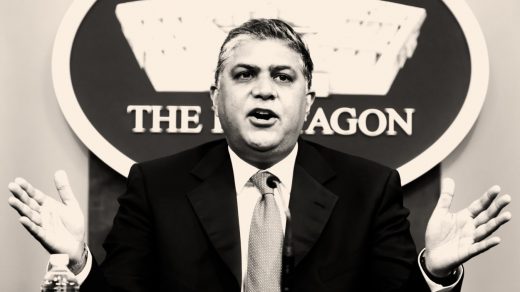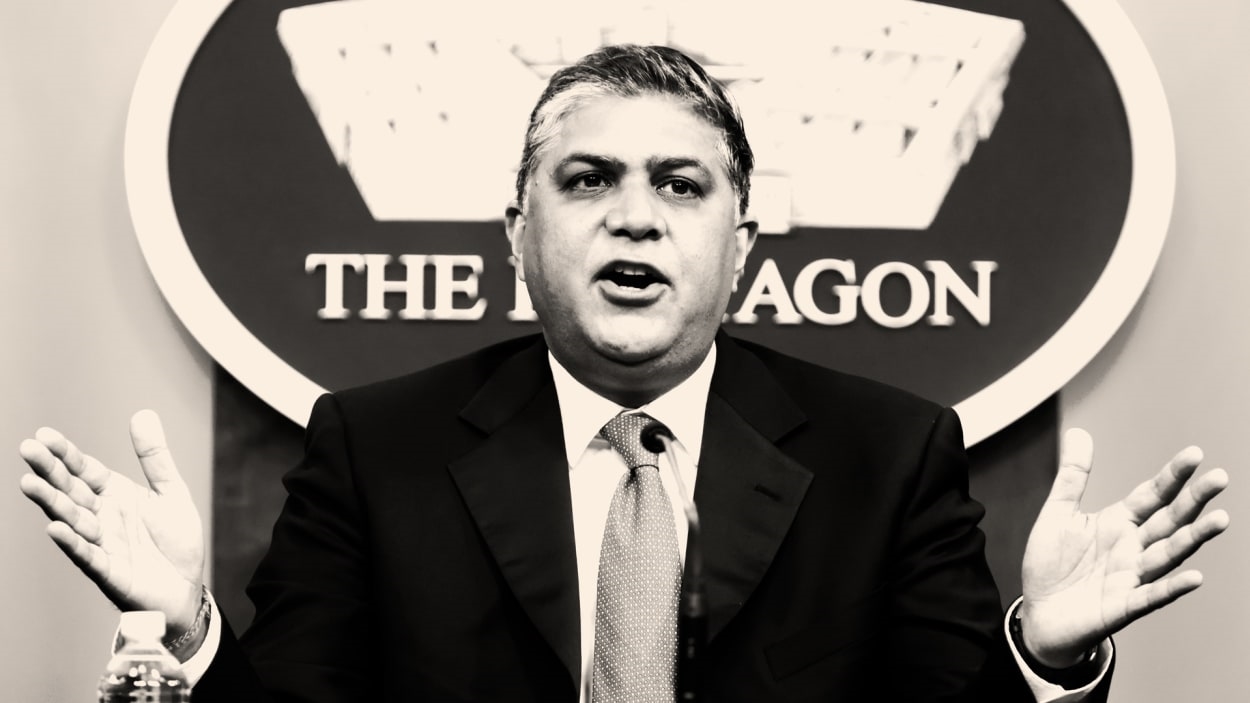The CIA’s CTO and deputy director explain the future of spying
It’s been 10 months since the Central Intelligence Agency tapped Nand Mulchandani to become the agency’s first-ever chief technology officer. A veteran of both the public and private sectors, Mulchandani had most recently served as CTO and acting director of the Defense Department’s Joint Artificial Intelligence Center. Before that, he cofounded several startups including Oblix, Determina, and OpenDNS (acquired by Oracle, VMWare, and Cisco, respectively).
The CIA hadn’t exactly been sitting on the sidelines of innovation prior to Mulchandani’s arrival. It played a key role in a number of advances, from touchscreens to magnetic resonance imaging. But the agency has also come under fire in recent years, with a number of former officers saying it’s been slow to adopt new technologies—and to pivot to combat new technological threats.
If the CIA’s involvement at South by Southwest is any indication, the agency hears the criticisms loud and clear. Mulchandani and Deputy Director David Cohen were both on hand in Austin last week for a panel about the future of high-tech spying, and to make a recruiting pitch to attendees.
Fast Company sat down with Cohen and Mulchandani to discuss the future of AI, Chinese spy balloons, and the Austin startup scene. This interview has been edited for length and clarity.
Fast Company: Nand, when you came in as CTO, were there flags or vulnerabilities that jumped out to you?
Nand Mulchandani: I wouldn’t say flags or vulnerabilities, but we’re a 75-year-old organization that’s done tech for a long, long, long, long, long time. I think the mission of the agency is so unique in that we get fires all the time: wars, balloons, all kinds of stuff. It’s such an incredible organization at jumping at problems and attacking them head on. And what happens is, our mission is so wide—we have an analytic function, we have covert action, we have counter intelligence—so the tech problem is also so wide and so scaled. There’s a lot of stuff going on.
The mission from the deputy director and the director [William Burns] was, “This is great. We’re executing every single day. We need somebody to come in and [execute] two big pivots.” One is starting to take a more “one CIA” approach to the whole thing. How do we rationalize this portfolio? How do we start building economies of scale? Something like AI requires all these small projects and tech to start adding up into a common platform where you can do things at scale. The idea of scale, interestingly enough, is counter to the spying mission, which is small and secret.
And the other side of it is that the world outside is changing so rapidly in terms of biotech, AI, high-performance computing, satellite, space, fusion. What does the two-year outlook look like? What does the five-year outlook look like? Traditionally, the agency has thought of that for things around global security issues; thinking around tech is a brand-new thing for us.
David Cohen: The over-the-horizon thinking that Nand was talking about, has, as I think about it, two dimensions. One is, what are the technologies that are going to be important to the agency, that we will want to leverage ourselves in the years ahead? The other is that technology itself is becoming a domain for competition and conflict. We have historically focused on military weapons; we have the world’s leading experts on military, hardware, weapon systems. But increasingly, I think the recognition is that technology is also going to be a domain that has real national security implications and the potential to be weaponized itself. We brought in a CTO to help look over the horizon—what are the new, disruptive technologies that are coming down the pike?
FC: What are some of those technologies you’re talking about?
DC: The technologies or verticals—as my friend [Mulchandani] from the Valley likes to call them—that we are focused on are: wireless, so 5G, 6G; microelectronics, semiconductors in particular; biotechnology and bioengineering; advanced computing, quantum in particular; fintech; and advanced power. In each of those areas, you can conceive of ways that an adversary can use those technologies to our detriment. So in each of those areas also there are things that the agency can be doing to advance how it performs its job.
Human intelligence: still required
FC: Do advances in these core areas take pressure off the need for on-the-ground sources and informants?
DC: The short answer is no. Our mission in the agency is to collect intelligence about threats to the United States from informants. One of the ways in which we will help understand what these technologies mean to us from a threat perspective is to recruit assets who can help us understand how our adversaries are making progress in these areas, and are using that technology in ways that can be a threat to us.
There is a human intelligence dimension to this, there’s a dimension to this across the sort of spectrum of intelligence collection—so human and technical intelligence, what have you—and there’s also a huge open source piece to this, right? A lot of what is happening in new and emerging technology is freely available. People publish papers, people go to conferences and talk about things. There are journalists who cover these issues who write interesting articles that we can harvest. And so one of the responsibilities of the agency is to also be attentive to what’s out there in the open source, and use that as part of the foundation for the analytical work that we do.
NM: Here we are at South by Southwest, a collection of humans coming together to mingle and connect. The human element in all these types of informational activities is incredibly huge. And the tech industry is like any other industry: It’s about people, it’s about founders. So the agency is taking an incredibly focused view on having a feel for the street. What’s happening? What are the breakthroughs? Who are the really smart people? What are the new ideas? We’ve been spending a ton of time at Capital Factory [a startup accelerator and coworking space]. [Capital Factory founder] Josh Baer and team—what an incredible scene they’ve created in Austin.
I just met with two founders who are still looking for seed funding for an amazing AI thing. Who knows if they’ll get a VC or not, but it’s incumbent on the agency and the United States government to be understanding and getting a feel for the arc of these industries. Every vertical that we talked about has its own characteristics, its own future as a business. The great power competition battlefield is tech; CIA is now all in on understanding that battlefield.
FC: You mentioned battlefields. William Burns last month acknowledged a possibility that China might send lethal aid to Russia. Given what you said about these six verticals, from a tech standpoint, how would the CIA react to that scenario?
DC: Our responsibility is to help understand whether that’s happening, and the thought process that Xi Jinping or others in China who are responsible for making this decision are going through, so that we can help our policymakers do what they need to do in order to try to avert this or to respond to it. From a tech standpoint . . . it’s an interesting question, I don’t have a ready answer to it. What we’re worried about is not China providing cutting edge AI to Russia; what we’re worried about is the possibility that they will provide classic weaponry and ammunition to Russia that could have an effect on the battlefield. Candidly, I don’t think there’s a big tech angle to this.
NM: The only twist I’d give is, obviously, the use of drones and other things has been highlighted in this conflict in a big way. Obviously, there’s a lot of AI capabilities in Chinese drones and systems that they could provide. But again, that’s a policy decision.
DC: But look, it’s a good point. Our performance in our human collection mission is fueled by technology. There is a technology aspect to basically all of our collection activity. But yeah, I don’t think it’s anything unique about that potential eventuality.
The balloon incident’s upshot
FC: You alluded to the spy balloons earlier. Did that episode change strategy or thinking within the CIA following?
DC: That whole episode, I think, helped in a variety of ways in our collection—and not just the agency, but the IC [intelligence community] as a whole. As that balloon was making its way across the United States, we took the opportunity to learn about what its capabilities might be. We essentially turned what was an effort by the Chinese to collect into our own collection opportunity. Once the balloon was shot down and it was recovered off the coast of South Carolina, we along with others in the government have been spending time with the equipment that was picked up, understanding even more about what the Chinese capabilities are. So there is a significant collection opportunity that we and others across the intelligence community are taking advantage of out of this.
FC: What’s the most intriguing innovation within the CIA right now?
DC: Well 100%, if I could think of it, I couldn’t tell you. [Laughs] But to go back to something I mentioned earlier: open source. There’s a real near-term opportunity to supercharge our open-source center with advances in AI.
We already use AI to some extent to do that. We are the functional mission manager for open source, which means we are the agency that helps the entire intelligence community focus on how open source should be performed; and we have a really important open-source mission just for ourselves. Adopting AI and continuing to adopt that into our open-source effort—that’s an area where I think we are going to see really significant dividends in the near term.
(21)



